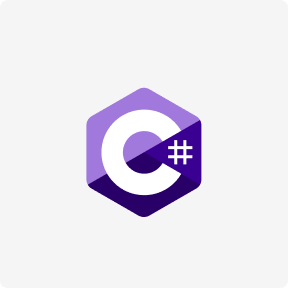What is an IoT Platform? And How to Choose One
In that edition MachNation also expected global IoT application enablement and device management revenue to reach $83.4 billion by 2025. As said, although the real IoT platforms have many functions in common (the core IoT platform features) but there are quite some differences in the various offerings with sometimes very different features. However, the term IoT platform is also used for many types of platforms. This kind of platform only focuses on the cloud portion of the solution. Thus they would provide a communication agent to which the devices can connect. The IoT platform is a generic layer that is built which vendors of IoT solutions build so that this a common layer above the application layer is built which changes with the use case and solution.

The IoT platform market is growing at a compound annual growth rate (CAGR) of 33% and is expected to reach a $1.6 billion market size in 2021. When choosing an IoT platform, reliability has to be the biggest factor worth considering. Given that you will be investing both time and capital into integrating your product with the platform, you should be able to rely on the platform. However, depending on the type of platform, or its specific uses, this architecture can look very different.
Tuya IoT Platform
The IoT orchestration hub is where all services around an IoT solution come together. They ensure connectivity, seamless device management from a single location, plus transparent data management and data processing. As hubs usually come as cloud services, their scalability also plays a role. Orchestration hubs are usually built as open solutions and can integrate with various IoT services on top. Instead of a simple connectivity management platform or a device management platform, most IoT platforms on the market right now are a combination of multiple services around IoT.
Moreover, IRI helps in sub-setting, drifting, imitating, and leveraging the IoT data for playbooks, data lakes, and analytics. They provide support for the storage of data as well as analysis of this data. It does not provide either connectivity or an application-level iot platform vendors feature that helps form into a solution. Discussing the pros and cons of IoT platforms with developers is an effective approach to selecting the proper tools and services. Your development team can share its expertise and experience regarding the available options.
When Should Your Business Use an IoT Platform?
The Internet of Things (IoT) is a concept that encompasses connected devices and sensors deployed in the field to collect data about people, objects, and processes. It started several years ago but has grown in popularity as a major trend in recent times. Today, there are plenty of options for deploying your next-generation IoT solution, but which one should you choose? This guide will help you make the right choice by comparing some of the best cloud platforms available today. IoT Cloud Platforms offer users ecosystems that generate compatibility within IoT devices.

While every IoT provider deals with IoT data in some ways – these platforms provide tools that allow you to gain more insights from your devices. You can store or upload data with these platforms from the web or from devices. And typically, they also provide tools that allow you to transform and visualize data or trigger an action.
What are the types of IoT platforms?
It provides developers to connect devices, services, and APIs using a browser-based flow editor. It can run on Raspberry Pi, and further 60,000 modules are accessible to increase its facilities. IBM’s Watson IoT is a flexible and scalable solution built upon the https://www.globalcloudteam.com/ IBM Cloud. It allows for complete data lifecycle management with secure communication, it creates a gateway to collect data from a myriad of items. In a previous edition of the report MachNation expected IoT platform revenue to reach USD2.0 billion in 2017.
- Salesforce is a specialist Customer Relations Management (CRM) IoT platform.
- But a logistics-heavy organization is likely going
to have complex hardware needs that a device management platform can simplify
at scale. - Not only that, but IoT platforms give you a framework to build upon, rather than having to create your robot army from the ground up.
- This is a full-stack platform that consolidates and performs all services across the IoT value chain.
- Also, before you choose get a detailed insight into their security protocols to get a better understanding of the measures.
- You are also free to configure various hardware and software combinations to create a platform that meets your specific requirements.
- Some examples to illustrate this importance of additional technologies and of specific IoT technologies in the evolution of IoT projects and, as a consequence, in the fragmented IoT platform market.
With IBM Watson IoT, you can collect insights from automobiles, buildings, equipment, assets and things. An
IoT platform is a platform, including software and hardware, used to manage
internet-connected devices and the networks controlling them. It provides the
infrastructure for connecting smart devices in a simple and secure way, as easy
as any SaaS website you’re used to using every
day. MainFlux refers to the patent-free and Open-Source IoT platform that incorporates Edge Computing in its solutions. Moreover, the platform provides complete transparency solutions for data management, core analytics, and scheduling.
The 6 Complexities of Building a Managed IoT Platform
But you may also require app development capabilities and the option to deploy your machine learning models right at the IoT edge. Here, we’ll discuss the key components of an IoT platform and what factors should influence your choice. A technology platform gives you lego blocks that you can then use to build a wider variety of applications.

It’s one of the reasons why the IoT platform market, which is still relatively young and evolving, is one of strategic partnerships, platforms of platforms and mergers and acquisitions. Some examples to illustrate this importance of additional technologies and of specific IoT technologies in the evolution of IoT projects and, as a consequence, in the fragmented IoT platform market. There is definitely some consolidation that is bound to happen and the bigger vendors obviously winning the race. The way out for smaller vendors would be to specialize in some niche as well as offer better ROI and faster go-to-market solutions. There may be other solution providers who may want to develop a solution but do not want to dwell on the intricacies of the devices and communication between them.
Industry 4.0: Things To Know About In 2023
Moreover, it provides centralization to various backend processes to analyze data. It also offers scalable solutions to help develop cloud platforms from scratch. IoT Connectivity Management Platforms refer to the central integrating components in IoT ecosystems. The platforms offer users software solutions, hardware accessibility, and data acquisition to connect devices to a network. It also depends on device configurations and IoT setup to execute various functions.

It offers device management, data storage, and analytics capabilities. This is an open-source IoT platform that provides a range of tools and services for IoT applications. Eclipse IoT also provides an ecosystem of plug-ins and extensions to customize the platform to your specific needs. The Internet of Things (IoT) strives to connect devices remotely for seamless functioning and ease of operations.
Comparison between Google Cloud, Microsoft Azure, Amazon AWS and Particle
The best feature of this IoT development Platform is the Azure IoT Edge. Moreover, this IoT is designed in such a way that different industrial sectors can easily use it. These types of platforms handle all the 9 yards services needed to provide IoT based solutions. This means handling the hardware, communication, security, data, cloud connectivity, to the extent of even managing the firmware updates as well as providing a service portal to support the solution. The reason why using these platforms will decrease your time-to-market is because they don’t focus on one aspect of your system – connectivity, management, or analytics.
